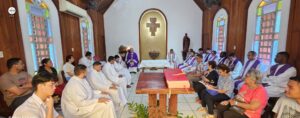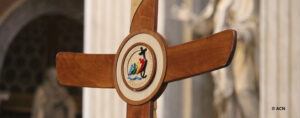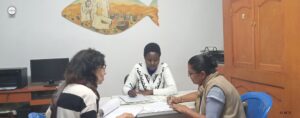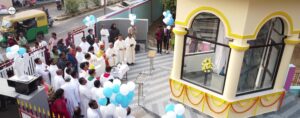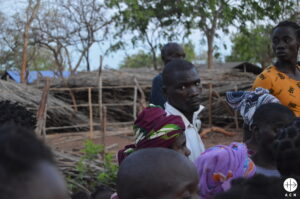Despite the ongoing conflict in Gaza, marked by uncertainty and fear, Fr. Gabriel Romanelli is striving to bring a sense of normality through education. The parish priest of the Holy Family Church in Gaza City has made it a priority to ensure that children in the community continue to receive “remedial” schooling.
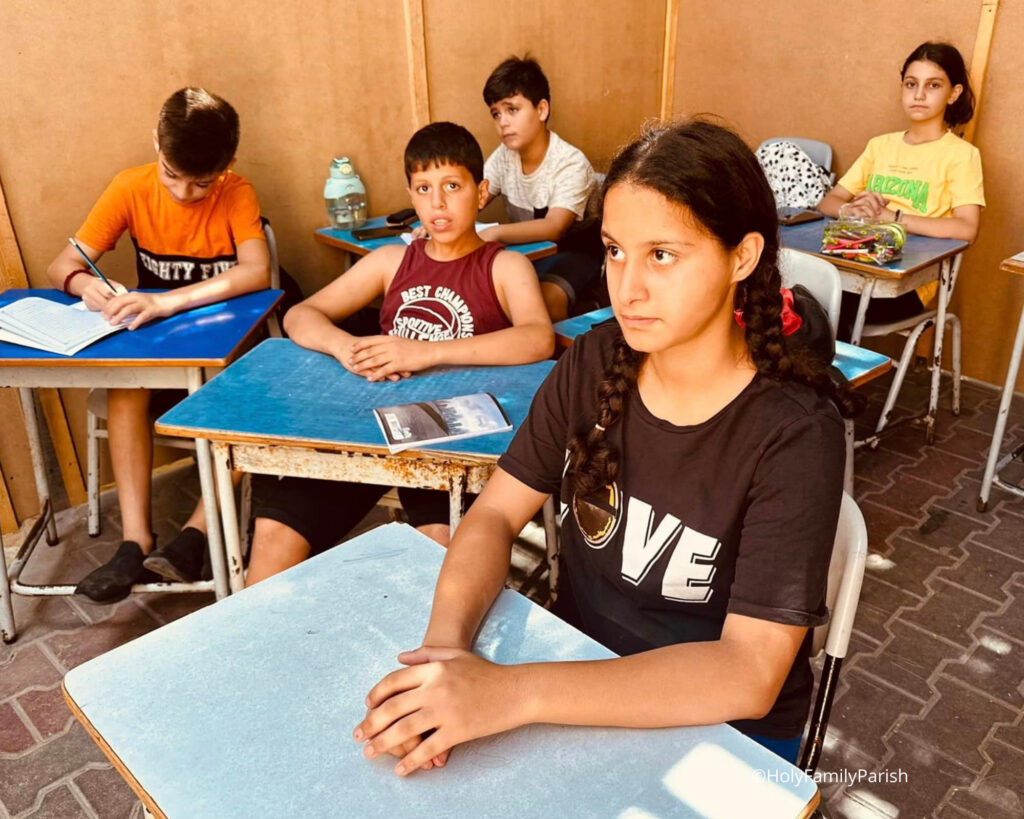
Over 10 months after the start of the war in Gaza, the few Christians remaining in the territory are exhausted and traumatized.
“The situation is bad, very bad, in all of the Gaza Strip, but especially in Gaza City,” says Fr. Gabriel Romanelli, the Catholic parish priest of the Holy Family Church in Gaza City in an audio message sent to Aid to the Church in Need (ACN). The priest recently decided to return to Gaza, having been caught outside of the territory at the beginning of the war and prevented from coming back for several months.

Despite the climate of absolute uncertainty, the Catholic Church is committed to making what plans it can for the future, especially with regards to education, says Sami El-Yousef, the CEO of the Latin Patriarchate of Jerusalem (LPJ), during a recent visit to the Holy Land by a delegation from ACN.
“Since Fr. Gabriel returned, he has been prioritizing some sort of education. Our initial plan is to provide basic education, given that August is the beginning of a new school year. That will be the second year without proper education. There are some teachers, but others left. We have lost contact with those remaining in the north. We are looking to rent the land across from the parish, and maybe locate containers to use as temporary classroom space.”
Fr. Gabriel (Photo) himself explains their attempts to begin classes for the children, despite all difficulties. “We began to have classes for the children with the help of teachers from kindergarten through to the first year of secondary school, teaching them at least Arabic, English, Maths, and Science. We had to suspend lessons because there were so many rockets landing nearby, but meanwhile we began some of them again,” he says.

“We never suspended adoration, the Rosary or Mass, and we continue to pray for peace,” he says, emphasizing the spiritual commitment of the Church.
During the visit to the Holy Land by ACN, representatives of the LPJ, which oversees the operation of a Catholic parish in Gaza, told the charity that less than 400 Catholics remain in the territory, which has been mostly levelled by the Israeli response to the terrorist incursion of October 7, 2023.
The Catholic compound currently houses 416 Christians, both Catholics and Orthodox, plus 63 children with disabilities who are looked after by the Missionaries of Charity. A further 204 people, all Orthodox, are in the adjacent Orthodox compound.
The Latin Patriarchate already operated a second school in Gaza, besides the one in the Catholic compound, which is being used as a refuge, and there were hopes that it could be reactivated when a ceasefire was established, but it was recently hit by a missile strike and there is no guarantee it will ever be operational again.
“Every week we lose somebody”
The director of the Project Development Office of the LPJ, George Akroush, explained to ACN’s representatives that the living conditions in the Catholic compound are difficult and crowded, with up to three families living in a classroom. “There is no privacy for families or for couples. Some of the families are lodged in the lower levels, near the septic tanks, but that is unhealthy, so they rotate every few weeks. But with this atmosphere, naturally, tensions run high, and arguments can break out.”
Although the Christian compounds in Gaza are relatively safe, compared to the rest of the region, there have already been several casualties. Some were killed by sniper fire and rocket strikes in the compounds by the Israeli offensive, others while trying to salvage their belongings from their homes, but most have died due to lack of medical treatment. “Every week we lose somebody, not necessarily because of military action, but because of lack of medication,” says Sami El-Yousef. “The elderly pass away senselessly. We estimate about 35 people have died, and approximately 300 more have left the Gaza Strip. Several families, when things quietened down, decided to return to their homes, if there were homes left to go back to, but with the return of military action in the north they returned to the compound,” he told the ACN delegation during its recent visit to the Holy Land.
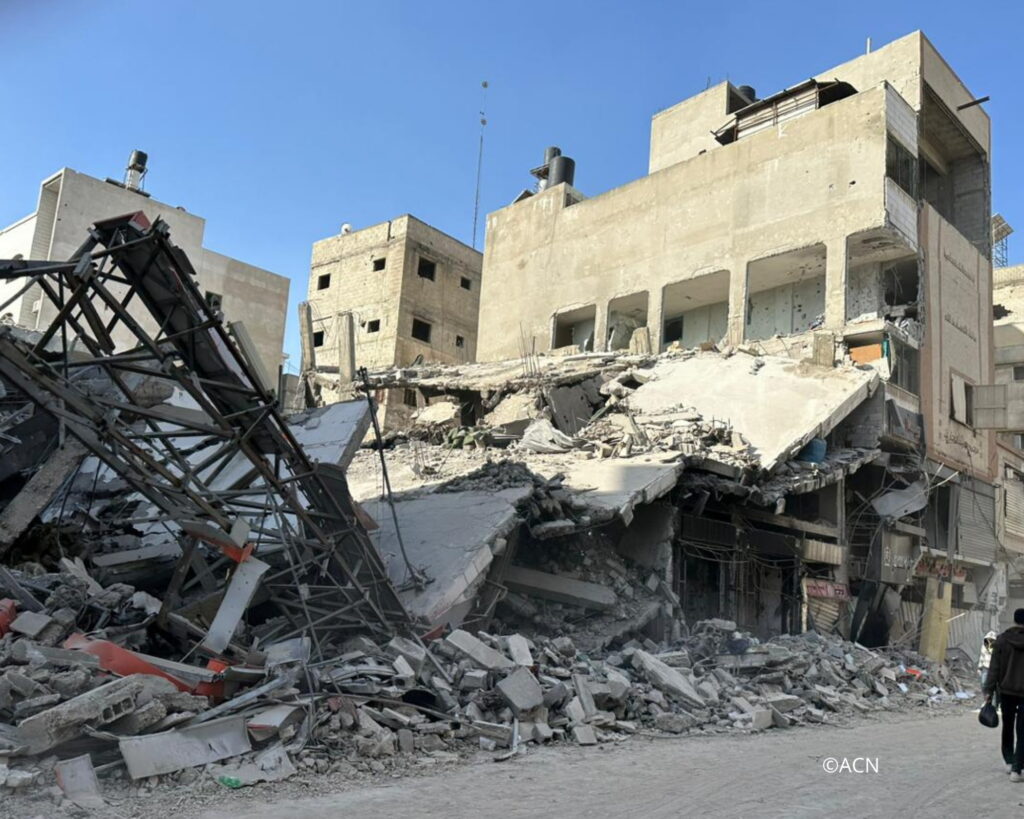
Currently, the only way to leave Gaza is through the border with Egypt—when the border is open. But doing so requires either having a foreign passport, or bribing officials, and that is not to mention the immense danger of even reaching the border. Once in Egypt, refugees are given 48 hours to leave the country.
“There are many who want to leave. They don’t because they can’t take their belongings, and because it is dangerous,” says Bishop William Shomali, LPJ’s patriarchal vicar for Jerusalem and Palestine, to ACN, with Sami El-Yousef adding that “many of the Christian families are deeply rooted in Gaza.”



